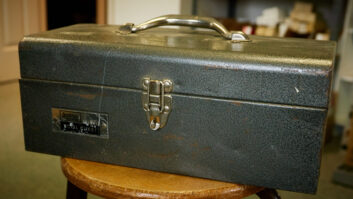In the first two installments of this series, we addressed some considerations for building out a low-power FM station and FCC rules that need to be taken into account in preparing for launch. Read those parts at radioworld.com/lpfmregulation. In this article, we’ll look at some of the requirements that govern actual station operation.

iStockphoto/DevonyuSTATION IDENTIFICATION
Regardless of whether your programming is locally produced or acquired from an outside source, you need to include your own legal IDs at sign-on, sign-off and as near to the top of each hour as a natural break in the programming will permit.
No matter how you brand or publicize your station, the legal ID must consist of the call sign and community of license. If you wish, you can add the name of the licensee, frequency or channel number and/or network affiliation between the call sign and community. You can precede or tag it with additional slogans, targeted coverage areas and other creative elements, so long as the required content is intact.
POLITICAL ACCESS
Must LPFMs grant access to federal candidates? No — Congress exempted non-commercial stations from this requirement that applies to all commercial stations.
However, if you choose to allow a “use” by a legally qualified candidate (that is, positive use of a candidate’s voice, other than in most news programming), then the equal opportunity, non-censorship and record-keeping requirements all apply. In addition, whether or not you allow access you must keep a file of all requests for broadcast time made by or on behalf of a candidate. And while we’re on the subject, LPFMs can’t support or oppose any candidate for political office.
EEO
The FCC’s formal Equal Employment Opportunity recruitment and outreach procedures only apply to stations with five or more full-time employees (30 or more hours per week). While few LPFM stations are likely to pass this threshold, once you do, you are expected to follow the required notification procedures for every full-time opening and to engage in the required number of outreach activities every two years.
LOGS
LPFM stations are required to maintain station logs. However, the content is minimal, requiring only information concerning extinguishment or malfunctions of tower lights (including FAA notification), an explanation of station outages (including due to servicing or replacement of equipment), operation that diverges from licensed parameters and reports of the weekly and monthly EAS tests (together with the reasons for any failure and corrective actions). Each entry should be dated and signed by the responsible person who entered the data. Logs should be kept for two years and must be made available to an FCC inspector.

KMGG studios in Albuquerque, N.M., show a nice LPFM setup.EAS
LPFM stations must have a current (2007) copy of the FCC’s EAS Operating Handbook, which can be downloaded athttp://tinyurl.com/fcc-eas.
All personnel should be familiar with the EAS requirements and procedures that are applicable to LPFM. This includes certified decoding equipment that monitors your two EAS stations assigned in your state EAS plan. During periods of unmonitored operation, it must be configured to automatically interrupt programming and transmit the audio portion of any EAS message received. Weekly EAS activation tests should be received from each source station and logged. Monthly tests must be both received and transmitted (and logged).
Although LPFM stations are not required to generate the EAS codes and Attention Signal, they must transmit the monthly EAS test script, which can be found in the EAS Handbook. If defective EAS equipment cannot be repaired or replaced within 60 days then an extension must be obtained from the FCC District Director of your area.
TOWERS
If your tower is required to be registered with the FCC (generally because it is more than 200 feet tall or found by the Federal Aviation Administration to be near a flight path), then the FCC Antenna Structure Registration number must be posted in a visible location at the site. You also need to monitor tower obstruction lighting every 24 hours, either directly or with an automatic alarm system. All required painting and lighting must match specifications on the Antenna Structure Registration (which reflects the requirements imposed in an underlying FAA study). The FAA must be notified within 30 minutes of any outage and again upon correction of the condition.
OPERATING POWER
Transmitter power output must be maintained between 90 and 105 percent of licensed values, determined by either the direct or indirect method. Operation at lower power, or going silent altogether, requires notification to the FCC within 10 days and special temporary authority beyond 30 days.
INTERFERENCE COMPLAINTS
During the first year of operation, LPFM stations are required to investigate complaints of blanketing interference within 125 meters of the antenna site. Remedial action is required, unless the problem is due to malfunctioning reception equipment, high-gain antennas, booster amplifiers, mobile receivers or non-RF devices.
LPFM stations are also responsible for correcting interference caused by spurious emissions, interference to the reception of any full-service FM station within its 70 dBu contour or city of license, and interference to the reception of certain third-adjacent channel stations.
The FCC publishes a convenient LPFM self-inspection checklist that explains these and other operational requirements. It can be downloaded at http://tinyurl.com/fcc-lpfm4. It’s somewhat out of date, as it discusses 10-watt LPFM stations, which the commission originally planned but then decided in 2012 to not authorize. Yet it provides helpful guidance and can prompt relevant questions that your legal counsel or engineer can answer.
In our final installment, we’ll consider upgrades, translators, sales and other elements of long-range planning.
Peter Gutmann is attorney with Womble Carlyle Sandridge & Rice LLP. He can be reached at [email protected].








